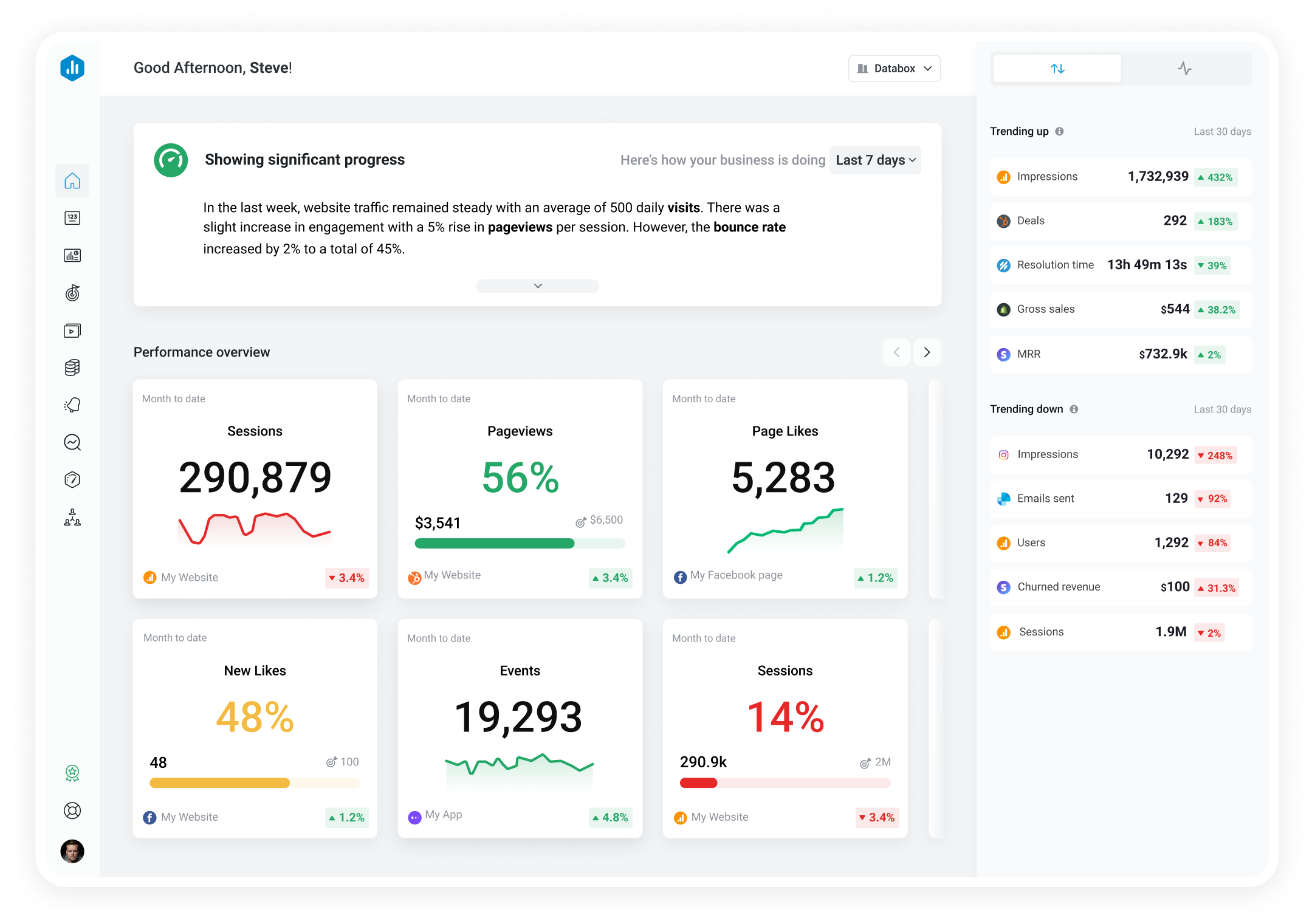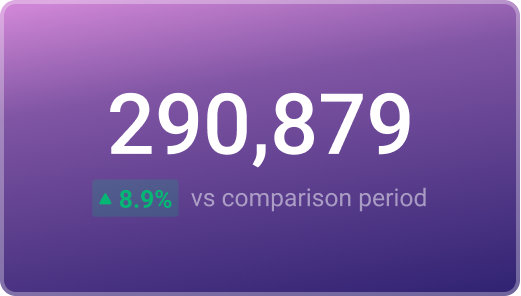Track all of your key business metrics from one screen
GET STARTED
 QuickBooks
Overdue Invoices Amount
QuickBooks
Overdue Invoices Amount The Overdue Invoices Amount metric represents the total amount of unpaid invoices that are past their due date.
With Databox you can track all your metrics from various data sources in one place.

Used to show a simple Metric or to draw attention to one key number.
Databox is a business analytics software that allows you to track and visualize your most important metrics from any data source in one centralized platform.
To track Overdue Invoices Amount using Databox, follow these steps:
 Goals
Goals Scorecards
Scorecards Metric Digest
Metric Digest Metric Builder
Metric Builder Data Calculations
Data Calculations Performance Screen
Performance ScreenStay on top of your company’s financial health with real-time P&L, balance sheet, and cash flow insights from QuickBooks. Built for business leaders, finance teams, and stakeholders to support smarter planning and decision-making.

